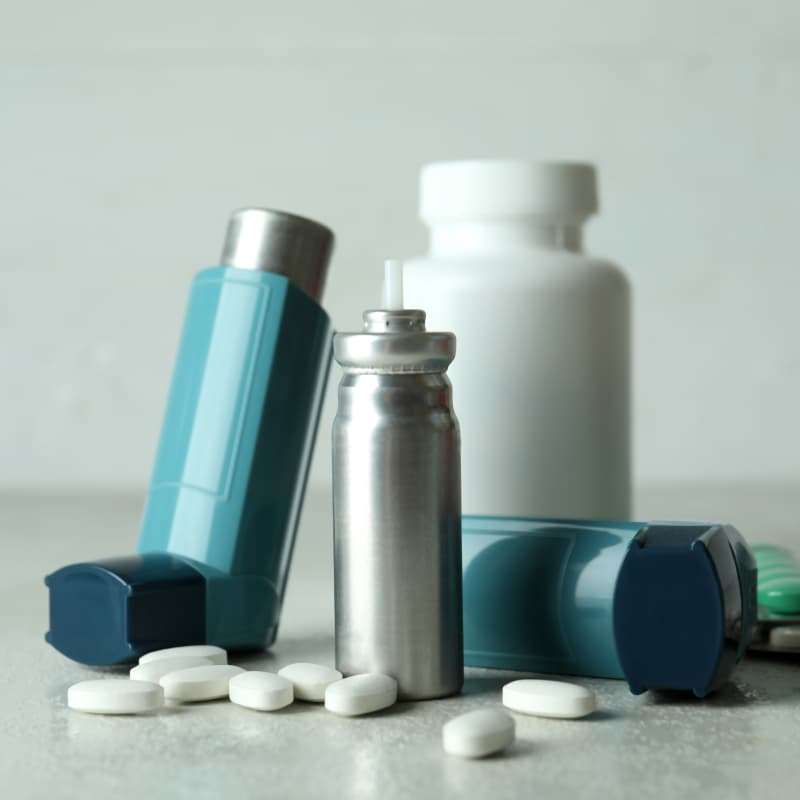
How many stages are there to COPD?
Patients with Chronic obstructive pulmonary disease (COPD) frequently experience difficulty breathing, a persistent cough, and shortness of breath. COPD is classified into stages or grades based on its progress. Continue reading to get more information and find out what are the 4 stages of COPD. We’ll go over the symptoms to expect at each stage, as well as various treatment choices.
What is COPD?
Did you know that it is believed that over 300 million people globally suffer from COPD? So, what is it?
Chronic obstructive pulmonary disease (COPD) refers to a series of lung diseases, including chronic bronchitis and emphysema that cause the airways to narrow, making it harder to breathe air out of the lungs. COPD is a chronic condition that worsens over time. [1]
What are the 4 stages of COPD symptoms?

Stage 1: Early
COPD in Stage 1 is considered mild. You may show symptoms of a problem with your lung function at this point. If your FEV1 is between 80 and 100 per cent of your expected value, your doctor will diagnose you with grade 1 COPD.
Symptoms
If you get a grade 1 on your spirometry test, you may not have any symptoms. However, some people may have symptoms of flu, for example, cough and increased mucus production. Thus, the early stages of COPD may be confused with flu, so it’s best to get a checkup if these symptoms don’t go away in a few days.
Stage 2: Mild
Stage 2 of COPD is considered to be between mild to moderate. When your FEV1 drops to 50 to 79 percent of your expected value, you have stage 2 COPD.
Symptoms
Your symptoms worsen from stage 1 to stage 2. Thus, coughing and mucus production may increase, and you may feel short of breath when walking or exercising. It is usually at this point that people recognize something is wrong and seek medical assistance from a doctor.
Stage 3: Severe
At stage 3, COPD is considered severe, and your forced expiratory volume is between 30 and 50 percent of your expected value. You may have difficulty breathing while doing day-to-day home duties and may be unable to leave the house.
Symptoms
At stage 3, you may experience more frequent flare-ups, as well as worsening shortness of breath and coughing. You will most likely become fatigued more quickly than before. Furthermore, new symptoms such as wheezing, difficulty breathing deeply, chest tightness, swollen ankles, and frequent sickness or cold may occur.
Stage 4: Very severe
Stage 4 is believed to be the most severe. Your forced expiratory volume is less than 30% of normal, and your blood oxygen levels are low.
Symptoms
Stage 4 may be life-threatening as it may cause heart or lung failure. You will most likely experience frequent severe flare-ups. Even when you’re sleeping, you can have problems breathing. [2]
Detecting and treating early-stage COPD is critical to decreasing the disease’s progression. If you have any early warning signs, such as shortness of breath or a persistent cough, see your doctor and find out what’s causing your symptoms. Early COPD screening is especially crucial if you smoke because you are more likely to develop this lung condition. [3]
Lifestyle changes that may help keep COPD from worsening?

Lifestyle changes may help your COPD from worsening depending on the severity of your COPD and how well you respond to treatment. However, the following strategies for a healthy lifestyle can help you keep your condition under control:
- Get enough exercise
- Avoid going out if the air quality is poor
- Quit smoking
- Consider getting a yearly flu shot
- Maintain a healthy diet [4]
COPD Treatment Options

COPD causes chronic lung damage; however, medication can help reduce the condition’s progression.
Some treatment options for COPD patients are:
- Pulmonary rehabilitation: A specialized exercise and instruction program.
- Stop smoking: If you smoke and have COPD, this is the most crucial thing you can do.
- Inhalers and medications: To help with breathing.
- Surgery or a lung transplant: Only a possibility for a small proportion of people.
- COPD Rescue Packs can also be purchased online from registered UK pharmacies such as e-Surgery.
Before starting any new medications, patients are recommended to see their doctor to rule out potential drug interactions. [5]
Takeaway
Detecting and treating the early stages of COPD is critical to decreasing the disease’s progression. If you have any early warning signs, such as shortness of breath or a persistent cough, see your doctor to determine what’s causing your symptoms. Furthermore, sticking to the medicine your doctor has prescribed is crucial to avoiding COPD flare-ups and delaying the disease’s progression. The best thing you can do for yourself after being diagnosed with COPD to improve your life expectancy and prognosis is to quit smoking.
Sources
- Four stages of COPD – Global Allergy & Airways Patient Platform | Gaapp
- What Are the 4 Stages of COPD and the Symptoms of Each? | Healthline
- What to Know About the Four Stages of COPD | Alto
- COPD Stages and the Gold Criteria: 4 Stages Explained | WebMD
- Chronic obstructive pulmonary disease (COPD) | NHS









